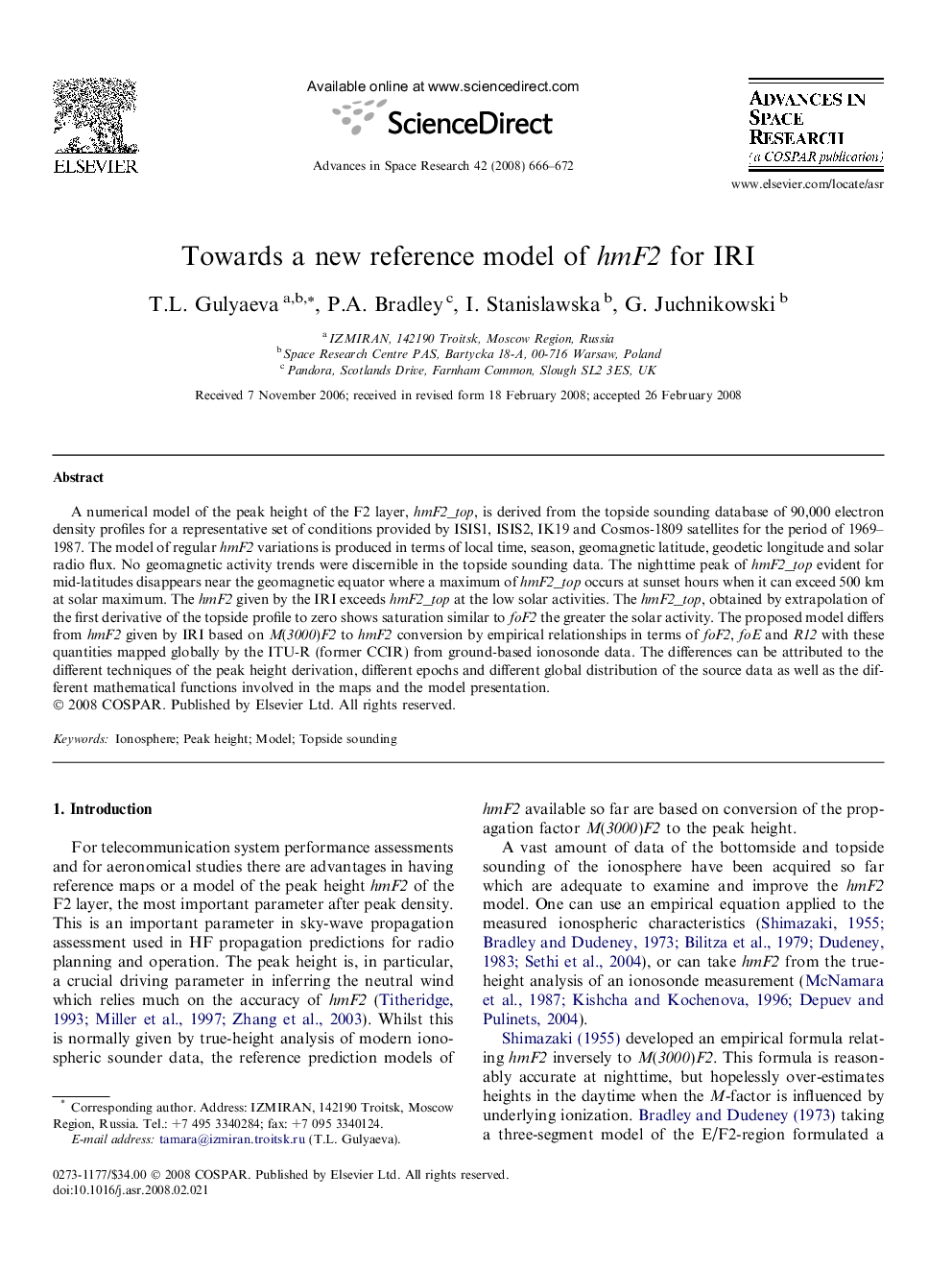| Article ID | Journal | Published Year | Pages | File Type |
|---|---|---|---|---|
| 1766290 | Advances in Space Research | 2008 | 7 Pages |
A numerical model of the peak height of the F2 layer, hmF2_top, is derived from the topside sounding database of 90,000 electron density profiles for a representative set of conditions provided by ISIS1, ISIS2, IK19 and Cosmos-1809 satellites for the period of 1969–1987. The model of regular hmF2 variations is produced in terms of local time, season, geomagnetic latitude, geodetic longitude and solar radio flux. No geomagnetic activity trends were discernible in the topside sounding data. The nighttime peak of hmF2_top evident for mid-latitudes disappears near the geomagnetic equator where a maximum of hmF2_top occurs at sunset hours when it can exceed 500 km at solar maximum. The hmF2 given by the IRI exceeds hmF2_top at the low solar activities. The hmF2_top, obtained by extrapolation of the first derivative of the topside profile to zero shows saturation similar to foF2 the greater the solar activity. The proposed model differs from hmF2 given by IRI based on M(3000)F2 to hmF2 conversion by empirical relationships in terms of foF2, foE and R12 with these quantities mapped globally by the ITU-R (former CCIR) from ground-based ionosonde data. The differences can be attributed to the different techniques of the peak height derivation, different epochs and different global distribution of the source data as well as the different mathematical functions involved in the maps and the model presentation.
